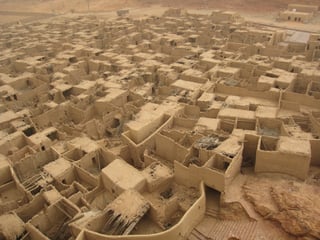Al-'Ula (Arabic: ٱلْعُلَا al-ʿulā), sometimes stylized in English as AlUla, is an ancient Arabic oasis city located in Medina province of northwestern Saudi Arabia. Situated in the Hejaz, a region that features prominently in the history of Islam as well as several pre-Islamic Semitic civilizations, Al-'Ula was a market city on the historic incense route that linked India and the Gulf to the Levant and Europe. The immediate vicinity contains a unique concentration of precious artifacts, including well-preserved ancient stone inscriptions that illustrate the development of the Arabic language, and a concentration of rock dwellings and tombs that date from the Nabatean and Dedanite periods that coincided with Greco-Roman influence during classical antiquity. Saudi Arabia's first UNESCO World Heritage Site, Hegra (also known as Al-Hijr, or Mada'in Salih), is located 22 km (14 mi) north of the city, in Al-'Ula governorate. Built more than 2,000 years ago by the Nabataeans, Hegra is often compared with its sister city of Petra, in Jordan. Meanwhile, the ancient walled city of Al-'Ula ("Old Town"), situated near the oasis that allowed for its settlement, contains a dense cluster of mud-brick and stone houses. Al-'Ula was also the capital of the ancient Lihyanites (Dedanites). Today, the city of Al-'Ula is within the Governorate of Al-'Ula (Arabic: مُحَافَظَة ٱلْعُلَا, romanized: Muḥāfathat Al-ʿUlā), one of seven constituent counties of Medina province. The city is located 110 km (68 mi) southwest of Tayma and 300 km (190 mi) north of Medina. The city (municipality) covers 2,391 square kilometres (923 sq mi), and has a population of 5,426. In addition to the ancient old town, a more recent historical city, displaying the settlement patterns of Arabic-Islamic urbanism, remains occupied and is currently experiencing a renaissance. The area is also known for its striking landscape of rocks, canyons, and wadis, and the contrast between these dry surroundings and the lush, palm-filled oases near the city's center. Al-'Ula was once a key stop on the Hejaz Railway, linking Damascus to Medina. From Wikipedia




